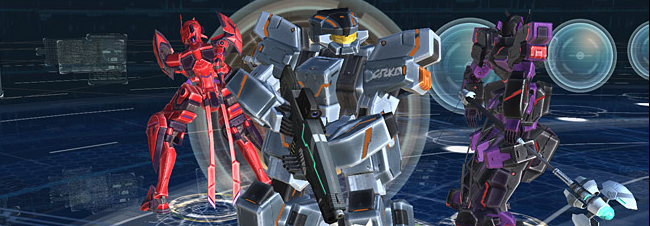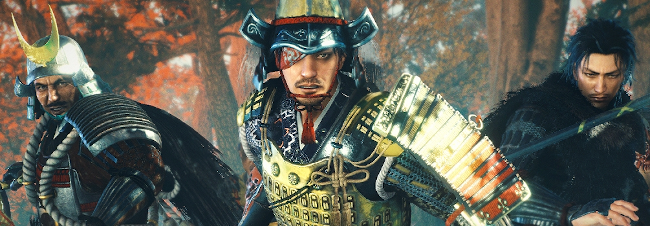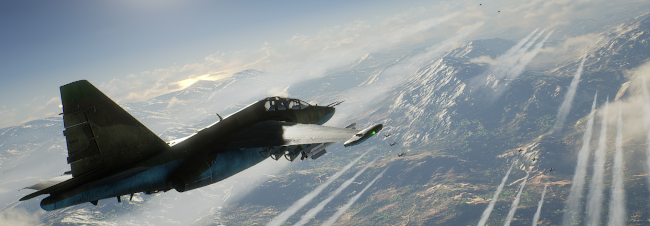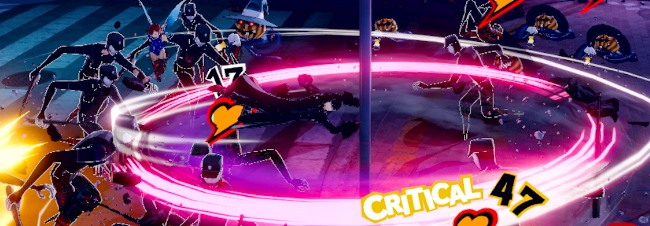
Branching Path: Kite Stenbuck's Top 5 Games of 2020
2020 was definitely a turbulent year where everything in the world, including the gaming scene, was affected. We did see several titles get delayed beyond the year, like Tales of Arise. But we also saw some new games that still managed to get released within the year, such as the Fairy Tail RPG and Final Fantasy VII Remake.
Although I did play more games, only a few of them mattered the most to me that I can write extensively about. Without further ado, here are my own top 5 games for the year, along with a couple of honorable mentions for games that weren't really newly released in this world.
Honorable Mentions
Phantasy Star Online 2 (PC)

As someone living in neither North America nor Europe, I have to admit that at first, I wasn't too excited about PSO2 getting an English localization as it used to be intended only for the former. Even less so when the Steam version was initially region-locked. But that all changed when the online game was finally unlocked almost worldwide, including in my region, after the Episode 5 update. The low entry barrier enabled even me to quickly get into both the current game and the hype train for the upcoming New Genesis.
The biggest drawing point of PSO2 to me is the ability to create a mecha avatar that, when tweaked far enough, can even replicate a Gundam or something else from pretty much any mecha franchise. Being accompanied by NPC waifus also helped motivate me to play the game even when solo... although I'm going to miss them in New Genesis dearly.
Monster Rancher 2 (Switch)

Monster Rancher 2 was one of my most favorite games on the PlayStation. I remember writing notes on every CD in my house, denoting which monster came out in the game. When it got ported to the Switch, it obviously lacks a disc drive, so the monster generation system uses an online CD database as an alternative. The rest is pretty much similar to how I played it in the past, except the soundtrack receiving a new remaster.
The most regrettable part here is that there are still no signs of the classic Monster Rancher Switch ports getting an English localization, despite the original PS1 release also being popular elsewhere around the world back then. I just hope these ports' success will inspire Koei Tecmo to make a brand-new Monster Rancher that has a worldwide localization and new monster generation systems suitable for the current era, such as reading QR codes or utilizing the Joy-Con's under-used infrared camera.
5) Captain Tsubasa: Rise of New Champions

Captain Tsubasa is one of the classic manga and anime franchises I grew up with. It's been 10 years since the last console game appeared for the DS in 2010 in Japan, so I was very excited to learn that a new game is coming to not only current-gen consoles but even simultaneously worldwide as well. Rise of New Champions did a spectacular job in re-enacting basically everything that made the franchise so memorable. The cutscenes thrown right in the middle of matches make it really look like watching a complete anime episode.
I dare say that the game's Episode of New Hero may actually constitute an RPG. You create your own original avatar, which becomes the protagonist of the new story, where you improve from a new rising star in a local school to joining the national junior youth team. Your character's stats will improve differently based on his own performances in matches and interactions with other characters.
But despite offering several entry points and ending branches, the mode did suffer from repetitiveness with a singular progression route in the middle. I wish it could add more variables to break the monotony right there, such as randomizing the world tournament's first group opponents or even joining another national team. I think those might be possible if this game gets a sequel based on the World Youth arc.
4) Nioh 2

The sequel to Koei Tecmo's ambitiously successful title is finally here. Although I felt like it got overshadowed by a certain first-party game with a similar setting, I was far more excited to follow this game. It may be a known secret that I prefer Nioh for writing the names of the historical figures in the proper order. However, it is, of course, also supported by new features and improvements.
The biggest difference from the prequel is obviously the ability to design our own protagonist avatar, which enables me to immerse myself even further into the lore. The enemies have become a lot more aggressive, and even more so when they are nearing death. But at the same, your character is also given new tricks up the sleeve with the Yokai Shift, Soul Cores, and Benevolent Graves. The latter allows a helpful NPC ally to temporarily assist you, although they are still balanced well against the enemies.
All in all, Nioh 2 was a massive enhancement over the first game. I think I might revisit it once again after the remastered version is up on the PlayStation 5.
3) Project Wingman

I am a big fan of modern jet fighter shooting games like Ace Combat, which is also known for its phenomenal soundtracks. (Fun fact: One of the series' main composers, Keiki Kobayashi, also contributed to the Final Fantasy VII Remake soundtrack.) Although Ace Combat 7 was definitely among my personal top favorites in 2019, the whole genre itself hasn't seen much competition since HAWX went under. That flame of competition should be finally reignited with the release of Project Wingman.
Every fan of Ace Combat will feel right at home with how similar Project Wingman looks and plays like the former. But what's really jaw-dropping is, while the former was worked on by a large team of developers and composers, Project Wingman is an indie game done by a small team with just three core members. It offered a near-matching quality in gameplay and soundtrack with just a single programmer and composer each.
What really pulled me into the game is a highly replayable single-player mode. The Conquest Mode has a random roguelike element that makes no playthrough be exactly the same. I'm also digging the addition of a talkative WSO co-pilot when a two-seater aircraft is chosen. The lack of cutscenes may leave something to be desired, but it actually worked in favor of the genre's most requested feature: a complete VR integration, which Ace Combat developers were hesitant to implement due to concerns of motion sickness from the existence of non-POV cutscenes.
2) Persona 5 Scramble: The Phantom Strikers

Persona 5 Strikers may be coming soon in the West. But the Japanese version, Persona 5 Scramble: The Phantom Strikers, is already long available in the East. And I am one of those who have already played and beaten the latter.
I have already written most of my thoughts about the game on an import impression piece, but I personally really enjoyed the Persona RPG with a Musou action gameplay system. It combines the fun factors from both franchises while still emphasizing that this is still a Persona game. Having played the original RPG beforehand really helped me acclimatize quickly to the Persona 5 gameplay system where I need to carefully sneak towards enemies instead of barging in like ancient warriors.
I only played the base Persona 5 without touching Royal, but that may have been a better experience for me getting into P5S. Since it doesn't refer to any characters or story elements added in Royal, I was able to follow the storyline without feeling anything missing. Without spoiling the game's story, I just wish to see more character interactions outside battles, as the lack of confidants and the over-simplified partner interactions dampened that Persona feel a bit.
1) Hyrule Warriors: Age of Calamity

I have to first admit that I was never too big on the first Hyrule Warriors. Having mostly only owned and played Nintendo's handheld consoles and games between the SNES and Switch, I couldn't connect well with the content and characters offered in the base version of the first game. With Age of Calamity, however, I felt like the entry barrier has been lowered so much that even people who are not hardcore fans of the Zelda series like myself can easily get into the new game.
The only Zelda title you need to have any knowledge of to get into Age of Calamity is Breath of the Wild. And even just a few basic knowledge on it would suffice already. I did play BotW for a little while, but it's still breathtaking to see the visuals in Age of Calamity looking exactly the same as BotW, from the graphical aesthetics to the UI. It feels like I'm playing a standalone expansion of BotW.
If I have to let a criticism out, aside from the performance issues, I found it a bit jarring that the in-battle dialogues still have no voiceovers, despite the game having cutscenes that are fully voiced. But other than that, Age of Calamity is a very solid Warriors game that fuses its hack-and-slash action with Breath of the Wild's aesthetics and gameplay system.
It took me quite a while to determine whether P5S or AoC should stand at the top of my 2020 podium. I ultimately decided to give the crown to the latter after considering the series knowledge accessibility. With the former, you ought to have extensive knowledge of the original Persona 5 storyline to fully appreciate the continuation story in Scramble/Strikers. In Hyrule Warriors' case, you can actually enjoy the BotW universe's lore either way. Although most people would have played Breath of the Wild beforehand, it is also perfectly fine to start with Age of Calamity first before entering the former's open-world adventure.
If I'm asked to recommend a game released in 2020, Hyrule Warriors: Age of Calamity is definitely the title that comes up at the top of the list.